As permaculture educator and community organizer Matthew Trumm was evacuating from the raging Camp Fire in Northern California last November, his mind turned to a video he’d seen recently with one of his heroes, the ecosystem restoration expert and filmmaker John D. Liu. Just the week before, Liu had invited him to serve on a council he was organizing to set up a series of Ecosystem Restoration Camps in California. As he fled from the flames in his car and began contemplating the underlying causes of the worst fire in California history, a scene in one of Liu’s videos burned into his mind:
“What he said over and over again was the idea that we need to gather around the campfire and restore paradise,” Trumm recalls. “And it was like chills went all over my body.”
Restoring paradise, figuratively speaking, was John D. Liu’s catchphrase for restoring the collapsing ecological systems of Planet Earth. A week later, the town of Paradise was incinerated. At least 85 people were dead, and nearly 30,000 homeless.
As he sped through rural Butte County, Matthew called Liu on Skype, on the other side of the world. “John, this is the spot,” he said. “Paradise is lost – we need to restore Paradise.”
He immediately called Liu on Skype, on the other side of the world. “John, this is the spot,” he said. “Paradise is lost – we need to restore Paradise.”
It took a minute for Liu to understand – and then he responded: “Oh my God, yes. I’ve got your back 100%. Let’s do this.”
Four months later, Liu, Trumm and more than 100 area residents, local authorities, and top-level experts in landscape restoration, sustainable design, natural building and other related fields came together and hammered out a plan for the rebuilding of the devastated city of Paradise in a way that could be a model of best practices for a world increasingly beset by disasters. And this weekend, at the first Ecosystem Restoration Camp in the U.S., that plan is starting to become reality.

The Ecosystem Restoration Camp model, a movement founded by Liu as a way to activate people from all walks of life to help restore damaged ecosystems around the world, at the same time sequestering carbon in regenerated soils and forests and helping to reverse climate change and mass extinction.
Even though he lives 20 minutes away from Paradise in Oroville, which ultimately escaped the fire, Matthew was personally impacted by it in many ways. His daughter and her mother live in Paradise, and he had just dropped his daughter off at school and gotten back home to Oroville when he got the call. The fire that would destroy the town, take at least 85 lives and leave nearly 30,000 homeless had just begun a few feet from his daughter’s school.
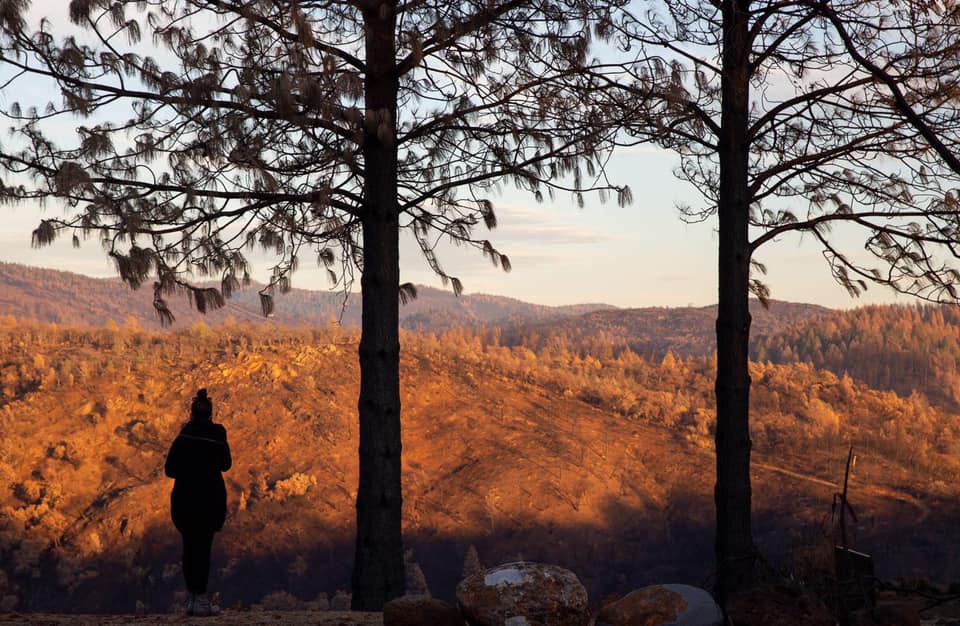
Trumm dropped everything and began to activate the network of permaculturists, organic producers, and community-minded people of all strips that he had worked for seven years to build in Oroville and the surrounding area. We sat down with Trumm recently to get his take on the upcoming Ecosystem Restoration Camp in Paradise (April 26, 27 and 28), the first in the United States and the first in a series of planned restoration camps in California.
Esperanza Project: I understand that the California Council for Ecosystem Restoration Camps just had its first meeting last weekend. Can you tell me about that?
Matthew: It was amazing, it went far beyond expectations – it was wonderful. Great facilitator, great team – I’ve been working with same people for the past couple of events that we’ve put together, a really dynamic crew, really loving people, awesome folks. There was beautiful opening ceremony, led by Canyon Coyote woman – a local native American who has the last bit of land the native people own in these parts, Indian Canyon – she did a ceremony and a hummingbird came right in the middle of it.
There were around 100 people who are top in their fields. I can’t speak for anyone else but for me this was really important – it was the first California Council for the Ecosystem Restoration Camps – and there was a lot of talk going into it, a lot of debate, but it seems like we were pretty unified when we got together this weekend.
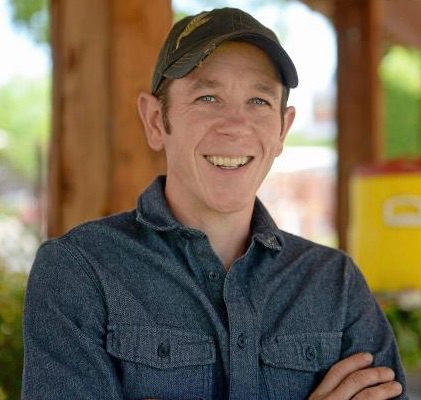
My personal goal was to get info that I needed to start this first camp here in Paradise. I got the message from John when we first started talking – this isn’t something you need to wait and get permission to do – there’s no governing body behind it – but you want to have best practices and get as unified as you can. So for me, I’m going to be doing this regardless – and whether you want to call it an Ecosystem Restoration Camp or whatever you want to call it –we’re going to be doing the same kind of thing here.
There’s so many like-minded projects around here- whether it’s homeless villages, shelter type projects, school programs, mental health projects – that all are in that human land and sharing the permaculture ethics. So we have been aligning with all these people and saying, how can we all not reinvent the wheel and share resources. The idea also would be that there’s this pool of local people we can all utilize who use the same software so everything looks the same. Like for instance we’re sharing between Rebuilding Paradise, the Camp Fire Restoration Project and the Not Just News website – we’re sharing the same accountant and contracting out that person, which makes it really nice because it all looks the same and we’re all speaking the same language.
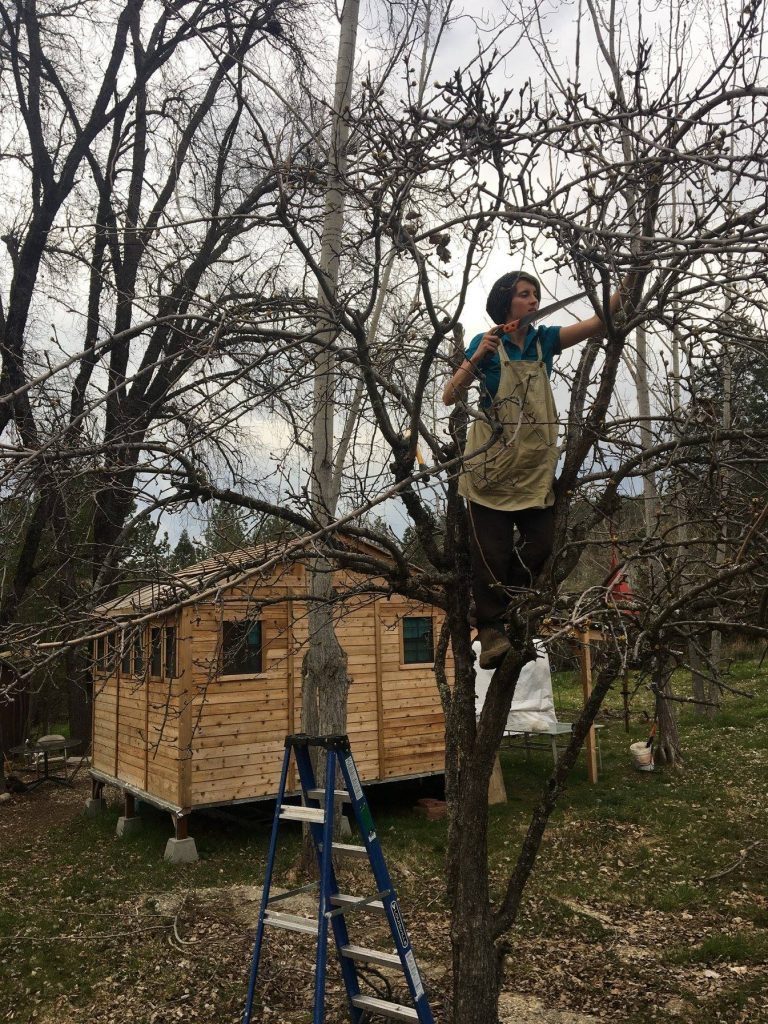
I’ve been playing around with permaculture for the last 7-8 years and I’ve been able to develop some good functioning systems here in Oroville, where I’m from – which is just 20 minutes outside of Paradise – so the last three years it’s been a ramp-up, an explosion of opportunities, kind of filling a niche here as an educator and having some positive feedback from the systems I’ve been working with.
Basically I moved down to Oroville three years ago March 15 and I didn’t know anyone in town, didn’t have connections or businesses, I was just doing some consulting, really bare-bones stuff. I started a design on my property here in Oroville; and basically in three years I’ve created seven businesses, and I’ve put three of my really close friends to work full time. We run school garden programs in the area – I run a school garden program called Cornerstone – and we have a CSA food box business; we have a farm-to-fork food truck business; we have a compost business, where we pick up food scraps from all the restaurants in town to make compost, which we sell and also use it in our gardens.
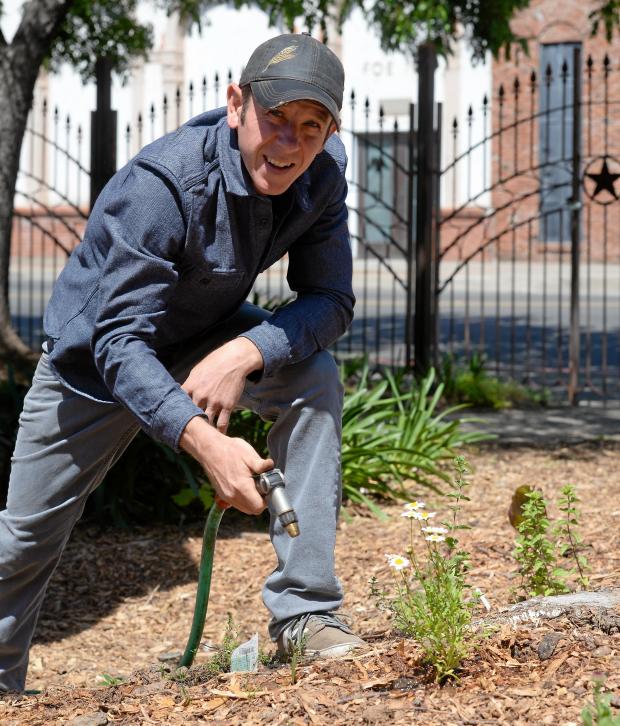
And I started a nursery – we’re the only mom-and-pop nursery in Oroville, and we give 25% of all the sales go to the school gardens in the area. And we have a consultation program that does permaculture consulting. And we do workshops and permaculture design certification courses – and that all came out of me just working on my own design in my yard, and the connections we made, connecting local farmers with restaurants – we have a network of 15-20 local producers we work with and get their products sold through our box program.

Esperanza: So that’s Treetop Permaculture?
Matthew: Yes. It’s been amazing – we started a permaculture group, we’ve got over 80 members now. We ended up having a farmers market which was offered to us because I did a design for the owner of this brewery in the center of downtown Oroville. He had this outdoor courtyard but the business was really hurting, it wasn’t doing so good. So my students did a design for him and he offered to lease me the land to do a food forest demonstration site and a part of that lease was that we ran a farmers market for a year, and that’s how we started the food truck and the box program.
We realized that the leak in energy from a farmers’ market – it really wasn’t a very good energy order, it wasn’t very efficient or healthy for humans or farmers to lug out all their food on Saturday in hot weather – so we developed the box program as a low-energy version of a Farmer’s Market. We think it’s much more successful and much more friendly for people.
It’s creating this whole community. It’s so fun — Friday nights we have all these people come to our house I can give them a tour of my backyard so they can see a permaculture system and how that works – and it’s food that’s in season and it’s local. So when people say – why don’t you have tomatoes? We get to educate them, and say – oh tomatoes don’t grow this time of the year – or they say, why don’t you have a variety of this – we can say, well you should start growing some food. If it’s not here, it’s because we don’t have that in our local community. It gives people a sense of what our local food system actually is. And we give them an opportunity to get involved.
We’re working this out together, slowly but surely improving it. And now we’re looking to develop an app for it that can revolutionize the way the food system works in the United States.
Esperanza: So getting back to Paradise – Oroville was unaffected by the fire?
Matthew: Yes. So the reason I gave you all of that – It seemed like when the fire happened on Nov 8, it was like everything I’ve been doing for the past seven years was all leading up to this moment. I wrote John Liu a message a week before the fire, and he responded … And so it was like wow, This is great – and then week later this fire happened.
That’s where it started. I put out a video the next couple days – I wasn’t thinking about Ecosystem Restoration Camps as much as direct needs and what needed to happen. So I put out a video and started getting people calling and emailing and messaging me from all over the place. I already had a great network so when I put out the call I said the thing they were thinking and they wanted to be involved. That’s where it began – then it was like going through and trying to figure this stuff out. First of all, what’s the most needed thing that’s preventing the toxic runoff from these homes from entering the water systems. So we were calling the county, trying to get permission to go in there.
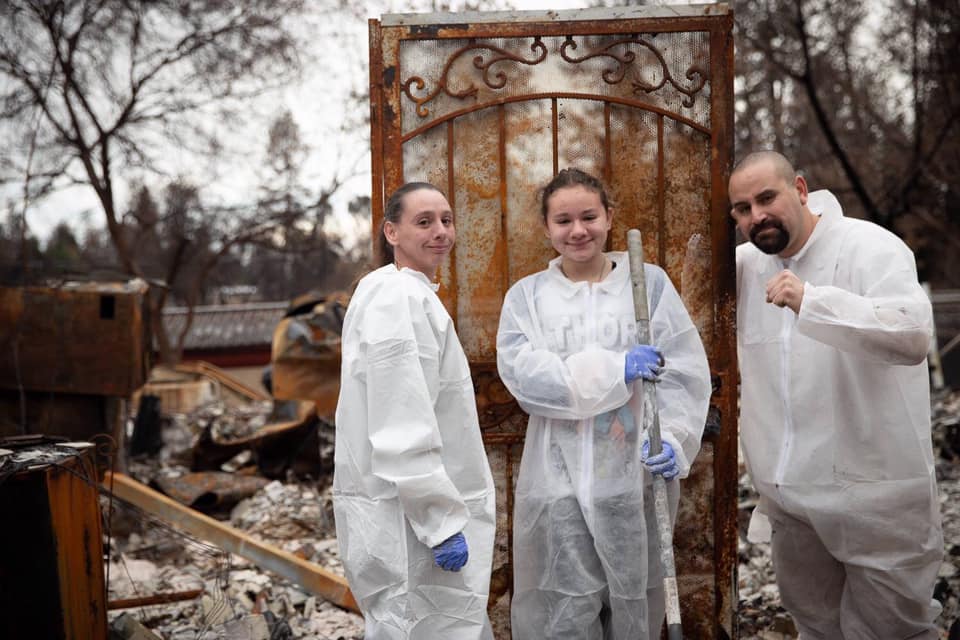
I put up a GoFundMe, and money started coming in; we started contacting different groups and getting donations of materials – wattles, the straw noodles for erosion control. I contacted a rice farmer who donated 2500 rice bales; I contacted the Natural Resources Conservation District, which donated a whole bunch, over 20,000 wattles; volunteers who wanted to do the work – and then there were the road blocks. We couldn’t go in there, they just wouldn’t let us in.
The county was going to sign a document to fast-track us to contract us out for the restoration work that needed to happen for the immediate aid work. We were signing paperwork with Butte County so we could hire contractors and lots of locals to do work and it was awesome – and all of a sudden the county said no, because the feds have kicked in so now we have to deal with feds and they only have a selected group of people we work with. So it was really frustrating.
We were able to navigate our way in to one area they weren’t paying a lot of attention to, which was Butte Creek Canyon, which is a really vital chinook salmon habitat. The people who lived in there, a lot of them started the Butte Creek Ecological Preserve, and got the creek designated as a preserve. They’re really cool people, and they had friends in Fish and Wildlife, so they were in there, doing the work – they were the first people to go into those areas – they were called Friends of Butte Creek – so we were basically supporting their effort getting a bunch of volunteers to come out for work days. We were out there putting wattles around homes to stop the toxic runoff from going into the creek; erosion control with straw, teaching people how to do it.
Then we were trying to get staging areas for more materials in the other areas as things started to open up as the fire went out finally we were able to get in there – and we created three staging areas, so you see on the website what the plan was.
We got one up in Concow – a hardware store let us use their parking lot to bring a bunch of stuff, so we had all these wattles delivered to the community and we got volunteers to do that. We got one in a church in Paradise and we also had the staging area at Butte Creek. So the three main areas we were able to start distributing materials; materials started running out, everybody hit a wall at one point where we were just burnt out for a little bit – we needed to refresh.
Then basically looking at the structure here, we came up with a plan, which was like, staging areas, training, then creating a series of educational workshops, then installations – so that we can start influencing local ordinances. So we created some events – some community meetings to explain the program – we started to find allies in different areas – so we hooked up with the Fire Safe Council, the Natural Resources Conservation Service, the Fish and Wildlife Services, so they were all giving us different resources and tools to give to the community. Like financial and grant opportunities.
We were getting a lot of good feedback and it was really heartening because the first meeting we had, a couple of people came up to us and one person said, This is the best meeting I’ve been to since the fire – because every meeting that’s happened so far has been very sterile and government-run and there’s been a lot of anger –people are mad at PGE, and mad that things aren’t going the way they should be – so there’s all this negative trauma.
Ours was the first meeting that was looking at positive solutions, which we learned later is a huge part of trauma therapy to have solution-based action that people can engage in.
The hardest thing in all of this was keeping up with the amount of people who want to be involved. People who want to help — I dread every day I’m not getting back to somebody – and it’s so difficult these days because you have seven forms of communication – you have email, several different Facebook messaging tools, phone calls – I’m the only person getting all that, and I’m trying to delegate – but at the same time I have to teach them systems. But as it develops we’re creating this great network of people.

One of the big things we’ve been able to do – the head of the Fire Safe Council, it was really synchronistic – normally they’re not very sustainably minded folks, but the new executive director of the Fire Safe Council, her parents were permaculturists since the 1980s and she lives on a farm and her husband is one of the head people for the sustainable organic rice program in the area.
When she heard about me and my project she immediately put me up on stage at this big meeting with the county supervisor and with all the head of fire departments and fisheries and the mayor of Paradise – I was on a panel with these guys – so permaculture was represented with all these big people and I was able to get that word out and the ideas about what we’re trying to do.
I had the fire department next to me, and when I was talking about how we should be looking at natural building models that are fire resistant, and water harvesting systems, and greywater, and composting toilets, and a new way to basically do things — we have towns completely gone, we’re starting from blank, and we need to rebuild the community in a way that’s appropriate for the climate, that can handle the climate realities around here, and that is with local resources.
When I started talking about cob as a building material, the fire department guys started shaking their heads, saying yes. When it was over I went up to them and said you guys seem like you know what’s up with that. They said Oh yeah we’ve been all over California and we’ve seen so many fires, and we’ve run into houses that were built like that and have survived.
When I started talking about these different things we wanted to do with the County supervisor, Bill Connelly, he looked at me and said, Matt – if it’s unincorporated areas and you’re getting along with your neighbors you can do whatever you want for the next five years – and so basically we got the window we’ve always been looking for here.
Background: a county ordinance was passed after the 2008 fire, called Title 25 for this area – it allows you to build an actual dwelling without code – and it was up to one year. When this one happened, we were able to get it extended to five years – and it’s a bigger size that’s allowed – and in the wording it now says it encourages alternative sustainable design models – and that’s huge. So we have five years to create all these alternative building models out here.
So I was talking to the supervisor about that, and showing him these other models we’d like to work with, I had immediately a 20-acre site that a friend offered up to do all these demonstration models. Since we’ve had over 50 properties that have sign up to say we want our property to be used as a demonstration site.
It just so happens the areas that burned, they’re all unincorporated areas where you could get away with things before this happened – people have built whole houses out there and lived in them for 15 years without permission – people do all kinds of stuff without permission, but because of this situation, it just ramped it up a whole other notch.
So that’s my main focus now, since the next year is still going to be people waiting to get back on their property. They still have to get hazardous cleanup – which is a slow process with the feds – and also the weather and conditions are not so great. We kind of missed the window for this season, we’re looking now for the fall for the next year before we do any real installations. We can do building in the summertime but we’ll be doing earthworks and water harvesting until the fall, which gives us a whole season of being able to educate the community in these techniques – we’re doing a workshop series, and we’ve reached out and they’ve reached out, all kinds of different experts in different fields.
We’re forming committees for each mainframe human element for rebuilding. So we have a water committee, we have a food committee, we have a waste to resource committee as we call it, we have a shelter committee and so forth.
The goal of the committee is to reach out to experts in these fields and essentially make the ridge an ultimate expo and demonstration site for all the different alternative sustainable design models for rethinking humanity and the way we live. And so everyone is buzzing right now – we have people reaching out from all over the place, trying to come out and help.
We’ve got Miguel Elliott, the leading cob expert in the world, who has reached out and is working with us. We have the Cal Earth Institute, we’ve got people who are experts in mycoremediation…
So the shelter committee has been pulling together all of these folks. We have one person we sent out to the Earthship School and he’s now come back with all that knowledge to be able to build an Earthship on his property to be a demonstration site.
We’re telling everybody, if you’ve been wanting to prove these systems, this is your chance. Come out and put up an installation – we’ll help organize community meetings and workshops, and installation bays, and let’s get to it – let’s show people what works.
That way people can look at all kinds of models and see what works for them. And now we can get local governments and agencies here to see these systems working, and hopefully we can get them to do permanent projects in this area in California.
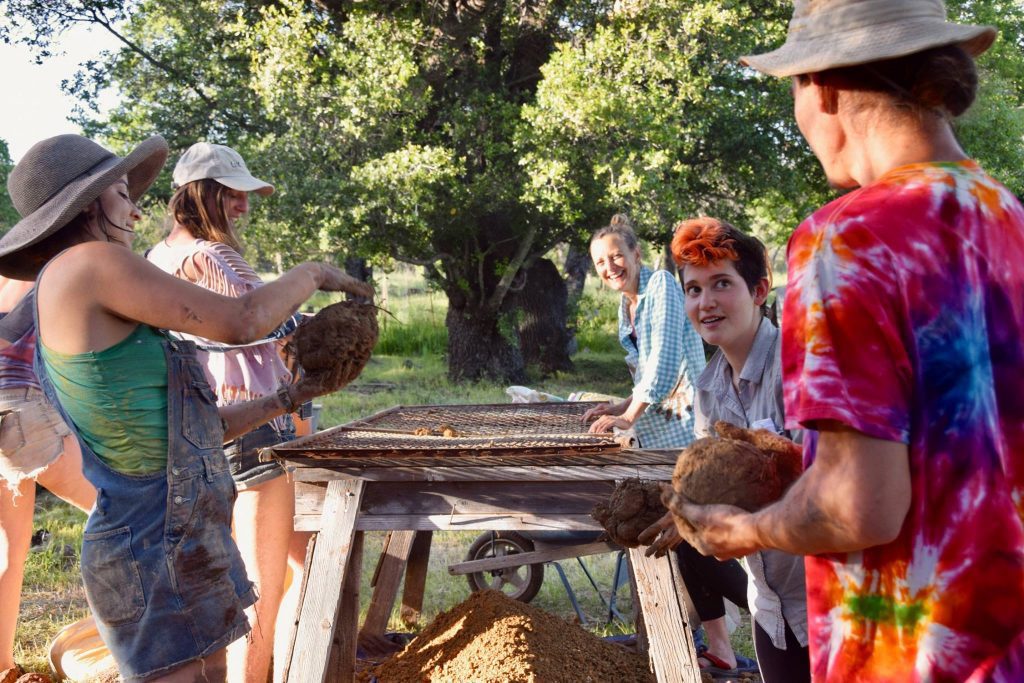
Esperanza: So this goes way beyond Ecosystem Restoration Camps.
Matthew: It is. I don’t even know – I think we’re just figuring out what that means. For me this is Ecosystem Restoration Camps – because it’s the whole ecosystem. It’s not just land, but it’s humans and land together. That’s my biggest thing – we see nature like it’s “out there.” We are nature – we’ve just been behaving poorly. But we are part of nature, and you can’t separate nature from where we dwell because we know that doesn’t work.
Ants come into your house; deer eat your garden food outside, fire destroys your community — there’s no escaping nature. It’s all around us all the time, and it’s our influence on it that creates the conditions we’re living in.
We are so much a part of nature and to me that’s the big message here — how can we fit ourselves into the definition of nature, design ourselves appropriately into that.
I think it’s time – and why its opening up for us here is because all these experts and local agencies, for the first time they’re putting their hands up and saying, we don’t know; we’re open for suggestions. Because obviously things are not working as a normal status quo, we have to be open to these new ideas new ways of living. I f you can put it simply enough so they can’t disagree with it, it’s really powerful.
It’s interesting navigating this but we’re building an army – right now it’s crazy.
This weekend solidified everything we’ve been working on – I was hoping to come away from that weekend (California Council – Ecosystem Restoration Camps) with them saying here’s the model that worked from Spain, here’s the model that worked in Mexico; what I realized is that everybody is figuring it out. And I feel we might have the biggest opportunity of all the areas to have the most impact and really define what to expect and what is an Ecosystem Restoration Camp, and what are the possibilities of what that looks like for a community.
We put it out there and everybody wanted to support us this weekend. At the end when we went around the room we had probably 20 people whose closing statement was: I want to go to Paradise to help with this camp. It was just amazing.
We’ve got our first one coming up on Apri 26 and we’re real excited about it – we got a $10,000 donation with companies like Dr Bronners, Gayaki and Annie’s Organics, and we’re basically going to put the whole thing on this camp to make it successful and make it a model going forward.
We’ve had so many people interested without even advertising it yet that I don’t know if we’re going to advertise it – I don’t know if we can manage the capacity of people who want to come out. We want to give priority to the local people, and especially the survivors.
This site we’re going to be hosting the first site at – it’s a 15-acre site – it’s a permaculture site and a really good location. So now that we’re understanding how much interest there is, we’re going to seek a permanent site – or multiple sites – we want to keep everybody together so that when we have these big events we can keep the momentum going – the property it’s on – it’s a 400-acre site – it’s in the perfect location. It’s right in the center of all the burn areas, but it’s outside the burn zone so it’s healthy already.
Esperanza: Why would you want to set up the camp there instead of in the burn zone?
Matthew: The camps shouldn’t be on a degraded piece of land because it wouldn’t be happy or healthy for the people – you want to be just outside the degraded areas, or maybe you’re on a property that’s degraded but there’s a part of it that’s really nice. The water, the air are unhealthy and possibly toxic at this point. We have to be really careful about that. Because when people are at the camp it should be a good experience. And there are a lot of things you can do at the camp, like training, like support systems for the actual work – and then just getting together a community and showing other sustainable models – water, showers, composting toilets – cob huts and stuff like that.
We want to give light work to people who are fire survivors – we’re tough people, we’re resilient – and it’s a really amazing community. There are over 20 people who are permaculturists who lost their property and they are right there ready to get right back into it. And there are a whole bunch of experts who are ready to get into this, people who do this stuff and don’t just talk about it in theory.
So on April 26-28 we have a 100-person cap for camping. We’re trying to fill it with as many locals first as possible – the action day is April 27, Saturday – and we will take as many people as possible on that one. Maybe a 300-person cap on that day, so it’s manageable. We’re figuring all this stuff out as we go.
On Saturday the 27th we’re going to be going up to Paradise and we’ll be focusing on a school, the last one in session in the burn zone – and they’re literally surrounded by burned down houses, and these kids are going in there every day. And we’re installing a garden, and we’re going to be planting a bunch of trees, and we have a couple other projects like that.
We’re creating the local council, like the California Council but for local people. We’ve had 180 people signed up to be part of project since the beginning. We’re creating the team from this that we’ll need for five years minimum.
It should be focused on local community first – If you’re going to start a camp, you just don’t bring in a bunch of people from the outside. You want to hear from the local community they want – which we have, and that’s where we’re coming from. For instance if we put it out there and we have all these people and there’s no room for the local people – that wouldn’t be fun.
We’re trying to stay in the middle here and not get political. Even using the word climate change – I don’t use that word because it’s a trigger word for a lot of people in this area.
It’s something everyone should think about – we’ve got to get through the front door with people first and then we can get into things – but let them initiate the conversations. I think there’s a lot to be talked about in that realm, about meeting people in a place that’s passive.

Esperanza Project: How can people help, and follow what’s going on?
Matthew: We’re here, we’re starting the camp, we can use support – financial, resource support (fundraiser here) and we’re trying to make sure we’re giving as many of the opportunities to locals first, but we need a whole bunch of backup systems to call upon – because not only will there not be everything we need here, but also there are going to be waves of people being burnt out and overwhelmed – people are still picking up pieces in this area.
Follow us on the Rebuilding Paradise Facebook page; here’s a recent post that pulls everything together. Here is the fundraising site.
With Paradise burned, we have a unique opportunity to reimagine and rebuild our town. We are living in the sixth mass extinction, 1,000-10,000 times the normal rate of extinction, unique as it is caused by humans. Our interconnectedness to all life on Earth is undeniable; we too will feel this loss and have so recently by the loss of our town.
We are at a crossroads, not just for Paradise, but for all of humanity, for Paradise is our home planet. If we do not act now we will lose Paradise, forever.
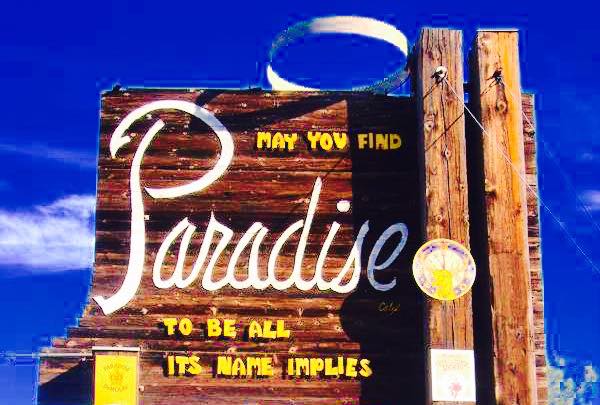
alternative building California fires Camp Fire Ecosystem Restoration Camps grassroots disaster response John D. Liu Matthew Trumm natural building Paradise regenerative agriculture
Hi Matthew and company— I’m an organic farmer and seedsaver, currently operating near Anderson CA on a friends property. I’ve got over 40 years experience in northern California and have volunteered thousands of hours on behalf of many communities and organizations and trained hundreds of interns thru WWOOF, Organic volunteers and other programs. I am working with a large and diverse collection of heirloom seeds and also have experience with California native plants. I just discovered your web presence today while viewing some videos from the recent Global Earth Repair Conference, for which i was a donor.
I hope to learn more about your efforts and contribute whatever i can. Thank you!
ps- my internet access is limited
Thanks so much for your comment, George, and for your willingness to lend a hand. I will be sure that Matthew gets your message. You can follow their work or contact them on their Facebook page, https://www.facebook.com/groups/349493992286914/about/, or their website, http://www.campfirerestorationproject.org. All the best, Tracy from The Esperanza Project.
I have the passion and willingness to partake in the restoration of the devasted areas by fires if an opportunity is given to me to share my Ghanaian experience as a network
It’s great to hear from you, Enyinnda! You can connect with the Ecosystem Restoration Camps community on Facebook at https://www.facebook.com/groups/1206960359323785/. I know they will love hearing from you!
I’m a Community Club Leader for Oroville Foothill 4-H club. We have a Fire Recovery project we started 3 years ago. We have planted over 3,000 trees and worked on erosion control in the Ponderosa, Wall and Honcut Fire areas. This year we are planning on planting fruit trees in the Camp Fire zone. We would like to work with you and coordinate our efforts. Our project works invites all the 4-H clubs in the county and works with students from local schools. We would love to benefit from your training and education to get our volunteers trained. Please contact me at 589-4641 or [email protected]. P.S. I live on a family ranch in Feather Falls that was an original homestead and is a Food Forest. We are big believers in the Permaculture movement and have been planning our fruit/nut tree planting in Paradise since last year. Let’s work together!
What an exciting project, Wayne! You need to speak to the folks at the Camp Fire Restoration Project, [email protected]. I will forward your email to them, as well.